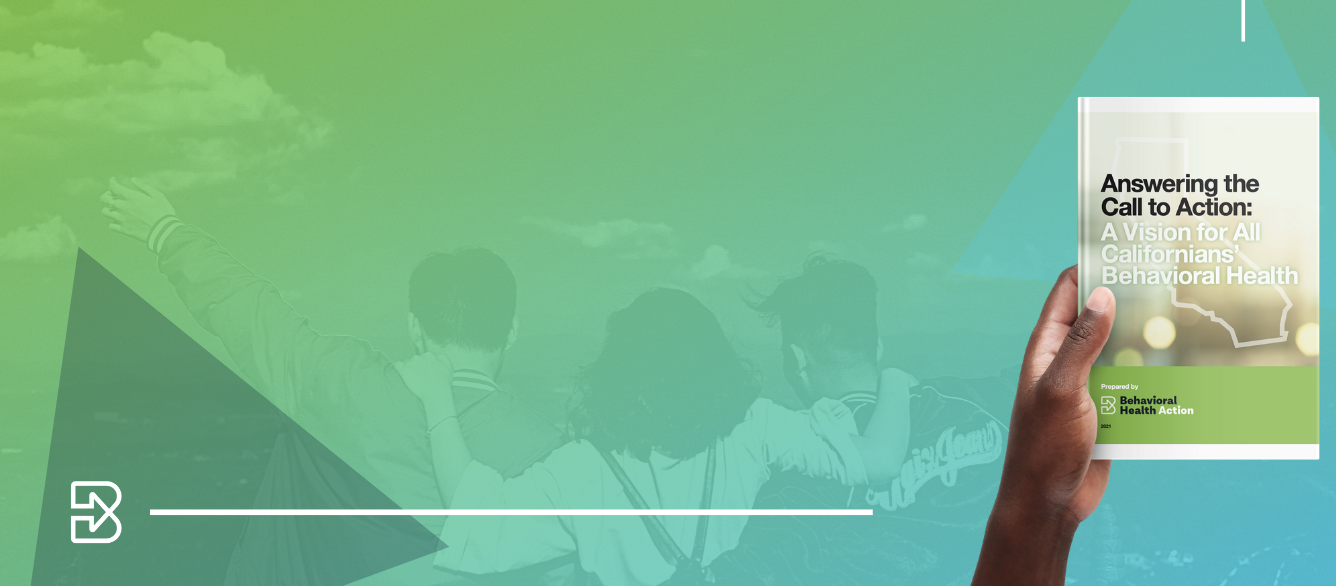Stabilize Crises
At times, even individuals with no prior history of a serious behavioral health condition can experience an emotional or behavioral health crisis. A mental health crisis is described as a non-life-threatening situation during which an individual exhibits extreme emotional disturbance or behavioral distress, is disoriented or out of touch with reality, has a compromised ability to function, or is otherwise agitated and unable to be calmed. In the case of substance use disorders, a crisis may occur if an individual has a relapse, or if an unforeseen event or circumstance presents an imminent threat of relapse. The range of services described in this document are effective — sometimes lifesaving — for individuals in crisis and can often avert the need to treat an individual in a more costly and restrictive inpatient hospital setting.
According to SAMHSA, “The research base on the effectiveness of crisis services is growing. There is evidence that crisis stabilization, community-based residential crisis care, and mobile crisis services can divert individuals from unnecessary hospitalizations and ensure the least restrictive treatment option is available to people experiencing behavioral health crises. Additionally, a continuum of crisis services can assist in reducing costs for psychiatric hospitalization, without negatively impacting clinical outcomes.”[i]
The services described below are critical to make available on a statewide basis if California is to be successful in preventing unnecessary hospitalization, arrests, overdose deaths, and suicide.
24/7 RESPONSE
Crisis response services available on a 24-hour, 365-days-a-year basis are provided through a variety of mechanisms, including crisis hotlines, mobile crisis teams that may include specially trained law enforcement, or simply a process for making urgent treatment appointments. These services offer important opportunities to safely divert individuals to stabilizing treatment, rather than hospitalization or arrest. Currently, they are primarily offered and financed through government programs and not covered by commercial health plans.
Crisis intervention services can be provided by clinicians anywhere in the community (e.g., at home, at school, on the street) when an immediate response is needed. As part of crisis intervention services, a clinician provides an assessment of an individual to determine if there is a need for inpatient psychiatric hospitalization or if they can safely remain in the community with access to appropriate outpatient care.
Crisis intervention services can be delivered in conjunction with law enforcement who encounter individuals with behavioral health needs to develop and implement alternatives to arrest and incarceration. Many crisis intervention services can also be used as an alternative to a law enforcement response. Additionally, crisis stabilization services provide mental health care in a licensed health care facility to avoid hospitalization. Some communities have established Crisis Stabilization Units to offer residents, ambulances, and law enforcement a safe alternative to hospital emergency departments or to avoid making a criminal arrest.
The National Suicide Prevention Lifeline is a long-standing resource providing suicide prevention and mental health crisis assistance (800-273-TALK/8255) and also offers support through online chats. Recent federal legislation was enacted to establish “988” as the new, nationwide, three-digit phone number for Americans in crisis to connect with suicide prevention and mental health crisis counselors. By July 16, 2022, all phone service providers must direct 988 calls to the existing National Suicide Prevention Lifeline.[ii]
NALOXONE
Naloxone is a medication approved by the FDA to prevent overdose by opioids such as heroin, morphine, and oxycodone. It blocks opioid receptor sites, reversing the toxic effects of an overdose. Naloxone is administered when a patient is showing signs of opioid overdose. The medication can be given by intranasal spray, intramuscular (into the muscle), subcutaneous (under the skin), or intravenous injection. A doctor can prescribe naloxone to patients who are in MAT, especially if an individual is taking medications used in MAT or is considered at risk for opioid overdose. Naloxone is effective if opioids are misused in combination with other sedatives or stimulants. It is not effective in treating overdoses of benzodiazepines or stimulant overdoses involving cocaine and amphetamines.
PARTIAL HOSPITALIZATION
Partial hospitalization services are for individuals with a psychiatric diagnosis and/or substance use disorder as well as co-occurring mental health needs, and are an effective alternative to inpatient hospitalization. They provide 20 or more hours of clinically intensive programming per week. These programs assign a multi-disciplinary team with direct access to psychiatric, medical, and laboratory services, and are designed to meet needs that warrant daily monitoring or management and can be addressed in a structured outpatient setting. Individuals typically attend the program five or more days per week for six hours per day. Services consist primarily of group therapy and education about mental health recovery and addiction-related coping and strategies, and/or addiction-related problems, as well as family intervention, medication management, and discharge services. Currently, partial hospitalization is a covered service only in Medicare and commercial plans.
INTENSIVE OUTPATIENT TREATMENT
Intensive outpatient treatment provides an alternative to inpatient hospitalization by providing structured programming for adolescents and adults with a psychiatric diagnosis or substance use disorder with a co-occurring mental health need. Individuals typically attend three days per week for three hours per day. Services consist primarily of group therapy and education about mental health recovery and addiction-related coping skills and strategies, as well as help to alleviate a crisis, prevent a relapse, treatment planning, and discharge assistance to link individuals and families to essential community supports. Currently, intensive outpatient treatment is a covered service only in Medicare and commercial plans.
CRISIS RESIDENTIAL
Crisis residential treatment services are therapeutic or rehabilitative services in a non-institutional residential setting that provides a structured program as an alternative to hospitalization for individuals experiencing
an acute psychiatric episode or crisis who do not have medical complications requiring nursing care. Crisis residential treatment services are typically provided for 90 days or less. The service includes a range of activities and services that support individuals in their efforts to restore, maintain, and apply interpersonal and independent living skills, and to access community support systems. The service is available 24 hours a day, 365 days a year.
Currently, crisis residential treatment facilities are licensed as “social rehabilitation” facilities by the California Department of Social Services. Unfortunately, this service is not available in every community. Of the approximately 1,580 mental health crisis residential beds in California, almost half (46%) are in the Bay Area and close to one- third are in Southern California (excluding Los Angeles). While over one-quarter of the state’s population resides in Los Angeles County, only 9% of the state’s 1,580 crisis residential beds are located there.[iii]
PSYCHIATRIC HEALTH FACILITY
Psychiatric Health Facility (PHF) services are provided in a multidisciplinary model as an alternative to psychiatric inpatient hospitalization for individuals who need acute psychiatric care, but do not require services to treat a physical health condition in an inpatient setting. Currently, PHFs are licensed by DHCS. While PHF services are an important part of a care continuum that strives to prevent psychiatric hospitalization, their availability is uneven in our state. Of the 520 PHF beds[iv] available statewide, 40% are in central region counties, which only represent 15% of the state’s population. The Southern California region and Los Angeles represent 61% of the state’s population, and yet have only 25% of all the state’s licensed PHF beds.
WITHDRAWAL MANAGEMENT
“Withdrawal management” has replaced the term “detoxification” in the treatment guidelines published by the ASAM. Withdrawal management refers to the medical and psychological care of patients who are experiencing withdrawal symptoms as a result of ceasing or reducing use of a drug or alcohol for which they are physiologically dependent. The symptoms, management practices, use of medications, and follow-up care depend on the substance from which an individual may experience withdrawal symptoms, as well as the acuity of the withdrawal symptoms.
Supervised withdrawal management can prevent potentially life-threatening complications that might result if an individual is left untreated. Detoxification is a form of palliative care (reducing the intensity of a disorder) for those who want to become abstinent or who must observe mandatory abstinence as a result of hospitalization or legal involvement. Finally, for some individuals, withdrawal management may be a point of first contact with treatment and the first step to recovery. These services may be provided on an inpatient basis in a general acute care hospital or in an outpatient setting, when safe and appropriate.[v]
Citations:
[i] Substance Abuse and Mental Health Services Administration, “Crisis Services: Effectiveness, Cost Effectiveness, and Funding Strategies,” 2014, https://store.samhsa.gov/product/Crisis-Services-Effectiveness-Cost-Effectiveness-and-Funding-Strategies/sma14-4848
[ii] Federal Communications Commission, “Fact Sheet: 988 and Suicide Prevention Hotline,” https://www.fcc.gov/sites/default/files/988- fact-sheet.pdf
[iii] California Health and Human Services Agency, Open Data Portal, https://data.chhs.ca.gov/
[iv] Ibid
[v] Center for Substance Abuse Treatment, “Detoxification and Substance Abuse Treatment,” Substance Abuse and Mental Health Services Administration, 2006, https://www.ncbi.nlm.nih.gov/books/NBK64119/


